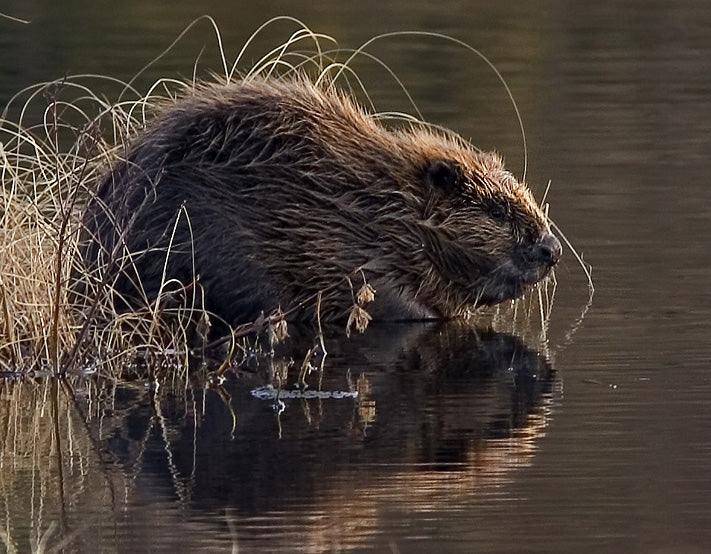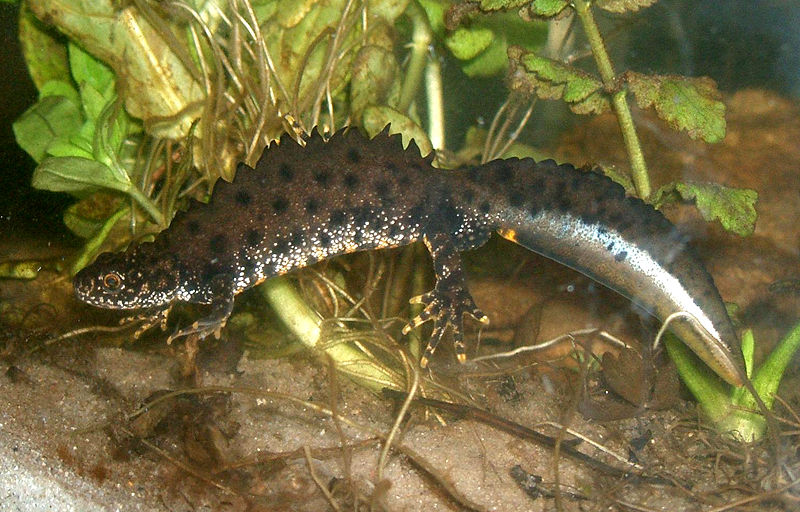
A Guide To British Fauna - The Eurasian Beaver
Scientific Name : Castor fiber
Common Names : The Eurasian Beaver, European Beaver

Photo:Per Harald Olsen, CC BY-SA 3.0 <http://creativecommons.org/licenses/by-sa/3.0/>, via Wikimedia Commons
Physical appearance : The Eurasian Beaver is the world's second largest member of the rodent family after the Capybara. It is Europe's largest rodent. An adult beaver can weigh up to 40kgs (but that is exceptional) but will usually weigh between 11 and 30 kgs.
On average, the Eurasian beaver will have a head and body length of 80 to 100cm. They have an average tail length of between 25cm to 50cm. The males will be approximately 30% heavier than the females.
It has large, powerful, orange teeth, which it uses to "chop" down trees and break down foodstuffs. Being semi aquatic, the beaver can hold its breath for up to 15 minutes at a time.
With regards to fur patternation and colouring; the European Beaver supports a lot of varriations which are somewhat dependent upon geographical location. For example, a light "chestnut rust" colour is predominant in Belarus wheras Russia hosts a huge population of blackish brown beaver. However 66% of the European Beaver are beige or pale brown.
Where to find/natural habitat : They have a preference for woodlands with water courses. They are currently found across a huge geographical range stretching from the UK to the eastern side of Europe. Beavers are known for their homes, known as "lodges", made by felling trees, which they subsequently process and arrange into dam like structures across waterways. Areas of deeper, still water are created around their dams. These dams make the beaver very inaccessible to predation and also offer a safe place where to give birth and bring up young. Beavers also use their dens for food storage. Interestingly, beavers build a form of chimmney into their lodges to help with temperature regulation.
Environmental manipulation : Beavers are great environmental architects. Due to their lodge/dam building, tree felling and river bank erosion, beavers can have major and lasting effects on their environment and subsequently, on the local ecology. This is why there was a lot of debate on reintroducing beaver to ecosystems, where they had become extinct. When re introduced, many ecological changes can take place including an improvement to the local fish stocks, an increase in bat population. When beavers fell trees, this gives bats more room to hunt and manouvre in so they catch more prey meaning they obtain more energy. In the case of fish, the deep, still pools provide a great, safe, resting place for fish and other amphibious creatures. Importantly, beaver dams could retain water in upland areas, reducing flood volumes and creating new habitats for wildlife
Habits and charecteristics : The Eurasian Bever is generally crepuscular but may be active at other times of day. A common misconception is that the beaver is an onivore. Infact, it is a strict vegetarian and will only eat aquatic plants and grasses as well as tree bark, leaves and twigs. The Eurasian Beaver does not hibernate but may be less active during colder periods, prefering to spend its time within the nice, warm lodge. Beavers build up a store of food, within their lodges, consisting of tree branches, trunks and leaves. They will eat the under bark (living layer within a tree) which provides them with sufficient energy to survive the colder months.
Photo:Ivo Kruusamägi, CC BY-SA 4.0 <https://creativecommons.org/licenses/by-sa/4.0>, via Wikimedia Commons
Breeding and birth : The female beaver is "in estrus" for approximately 24 to 48 hours per breeding season which normally spans from December to May, with a peak in January. Breeding pairs usually remain with each other for life. Gestation takes approximately 108 days and three "kits" are average for a litter. Large litters can be made up of 6 kits.
Predation : Across the range, beavers can be hunted and killed by eagles, mountain lions, wolverines, wolves, lynx and river otters.
Reintroduction into the UK : The beaver became extinct in England in the 15th century. Populations existed in Scotland and Wales, right up to present day. Since the new millenium, several beaver colonies have been established and reintroduced successfully into England and have begun to flourish.
Protection status : It is illegal to kill, harm or injure a beaver in the UK. Furthermore it is illegal to disturb or otherwise damage beaver habitation. This protection arises from the WIldlife and Countryside Act 1981 and can incur fines or prison sentences.
"Leave nothing but footprints, take nothing but pictures/memories."
Images courtesy of Ray Scott, Sven Zacek, Patrick Mackie, Darius Kowalczyck, Team Venture, Woodland Trust UK
The Bushgear Team



